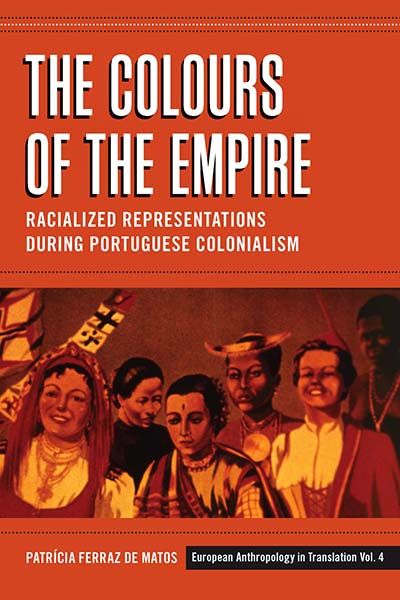The Colours of the Empire: Racialized Representations during Portuguese ColonialismPosted in Africa, Anthropology, Books, Caribbean/Latin America, Europe, History, Media Archive, Monographs on 2013-07-19 02:58Z by Steven |
The Colours of the Empire: Racialized Representations during Portuguese Colonialism
Berghahn Books
February 2013
308 pages
26 ills & tables, bibliog., index
Hardback ISBN: 978-0-85745-762-2
eBook ISBN: 978-0-85745-763-9
Patrícia Ferraz de Matos, Professor of Anthropology
University of Coimbra, Coimbra, Portugal
Translated from the Portuguese by Mark Ayton
The Portuguese Colonial Empire established its base in Africa in the fifteenth century and would not be dissolved until 1975. This book investigates how the different populations under Portuguese rule were represented within the context of the Colonial Empire by examining the relationship between these representations and the meanings attached to the notion of ‘race’. Colour, for example, an apparently objective criterion of classification, became a synonym or near-synonym for ‘race’, a more abstract notion for which attempts were made to establish scientific credibility. Through her analysis of government documents, colonial propaganda materials and interviews, the author employs an anthropological perspective to examine how the existence of racist theories, originating in the eighteenth and nineteenth centuries, went on to inform the policy of the Estado Novo (Second Republic, 1933–1974) and the production of academic literature on ‘race’ in Portugal. This study provides insight into the relationship between the racist formulations disseminated in Portugal and the racist theories produced from the eighteenth century onward in Europe and beyond.
Contents
- Tables and illustrations
- Acknowledgements
- Acronyms and abbreviations
- Introduction
- Chapter 1. Origins of a prejudice: the roots of racial discrimination
- The discovery of human variety: early formulations
- The emergence of ‘modern’ racism
- Racialism under attack
- Chapter 2. Discourse, images, knowledge: the place of the colonies and their populations in the Portuguese Colonial Empire
- The formation of Portuguese colonialism and ‘colonial knowledge’
- The Colonial Act and the ‘creation’ of the Indígena
- Colonial propaganda: ‘marketing the empire’
- Colonial representations in primary and secondary school readers
- Cinema and colonialism in action: moving pictures on colonial themes (1928-53)
- Recurrent images and prejudices
- The production of ‘anthropological knowledge’ of the colonies
- Racial purity, miscegenation and the appropriation of myths
- Chapter 3. Exhibiting the empire, imagining the nation: representations of the colonies and the overseas Portuguese in the great exhibitions
- The age of the great exhibitions
- Representations of the Portuguese colonies, 1924-31
- A ‘Guinean village’ at the Lisbon Industrial Exhibition (1932)
- The Portuguese Colonial Exhibition of 1934: concept and objectives
- Representations of the Portuguese colonies, 1934-39
- The Exhibition of the Portuguese World (1940): concept and objectives
- Colonial representations in Portugal dos Pequenitos
- The status of the colonized populations at the exhibitions: the exotic vs. the familiar
- Conclusions
- Appendix I: Film
- Appendix II: Texts from the padrões of Portugal dos Pequenitos
- Bibliography
